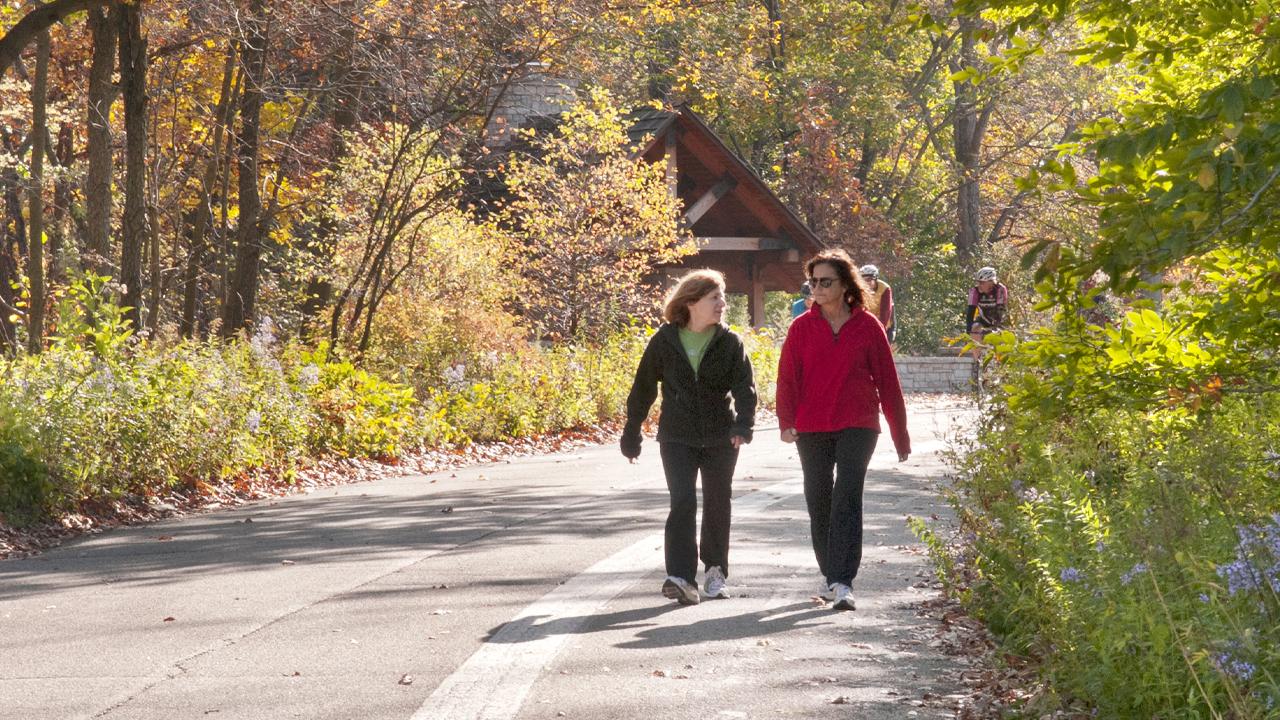

A Walk in the McDonald Woods
To understand spring, you must walk in the woods.
A Native Ecosystem
Here, in the Chicago Botanic Garden’s McDonald Woods, spring arrives unaided by mowers and edgers, or fertilizers and bags of peat moss. In this hundred-acre restored oak woodland, spring means the welcome presence of natural wetland areas, where amphibians, reptiles, birds, and water plants congregate before summer’s sun and heat turn these low spots to dried mud. Spring means the return of ephemeral wildflowers, so delicate, and yet so capable of pushing their way through layers of leaf compost left by the oaks, hickories, and other tall native trees whose autumnal leaf drop naturally enriches the soil.
More than Plants Share this Woods
Spring is when more than 100 migrating and resident birds pass through, seeking shelter, insects, seeds, and perhaps nesting material, too. In spring, ferns unfurl, trillium blooms, bluebells form around the edges of the Woods, and more than 400 different plant species come to life once again. Broken branches or fallen trees are not a sign of worry, needing immediate attention or removal, but a reminder of a natural order. Woodpeckers and flickers flourish, as do fungi, small mammals, and insects, which need these cracks and burrows.
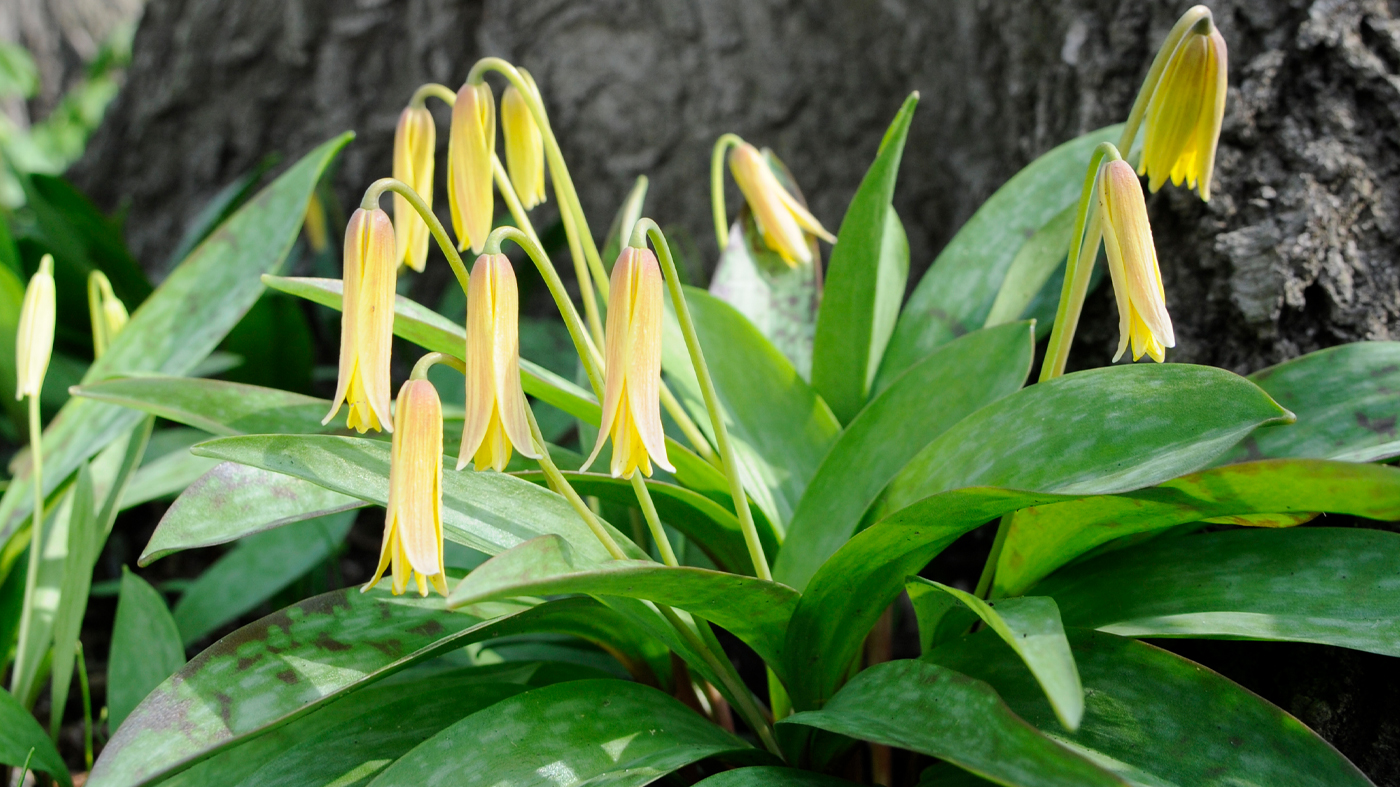
Wildflowers Emerge…
In early spring, a walk in the McDonald Woods reveals tiny treasures alongside paths that are kept dry with wood chips. The bright yellow flowers of marsh marigold and swamp buttercup gleam against the mud and dried leaves. Green umbrellas indicate May apples hiding underneath, and mottled leaves announce trout lilies will bloom soon. A few white-flowered Dutchman’s breeches can still be seen, as if they were indeed waving on a wash line. Part of the homework necessary to fully enjoy a woodland walk must include researching the origin of the charming names of these wildflowers.
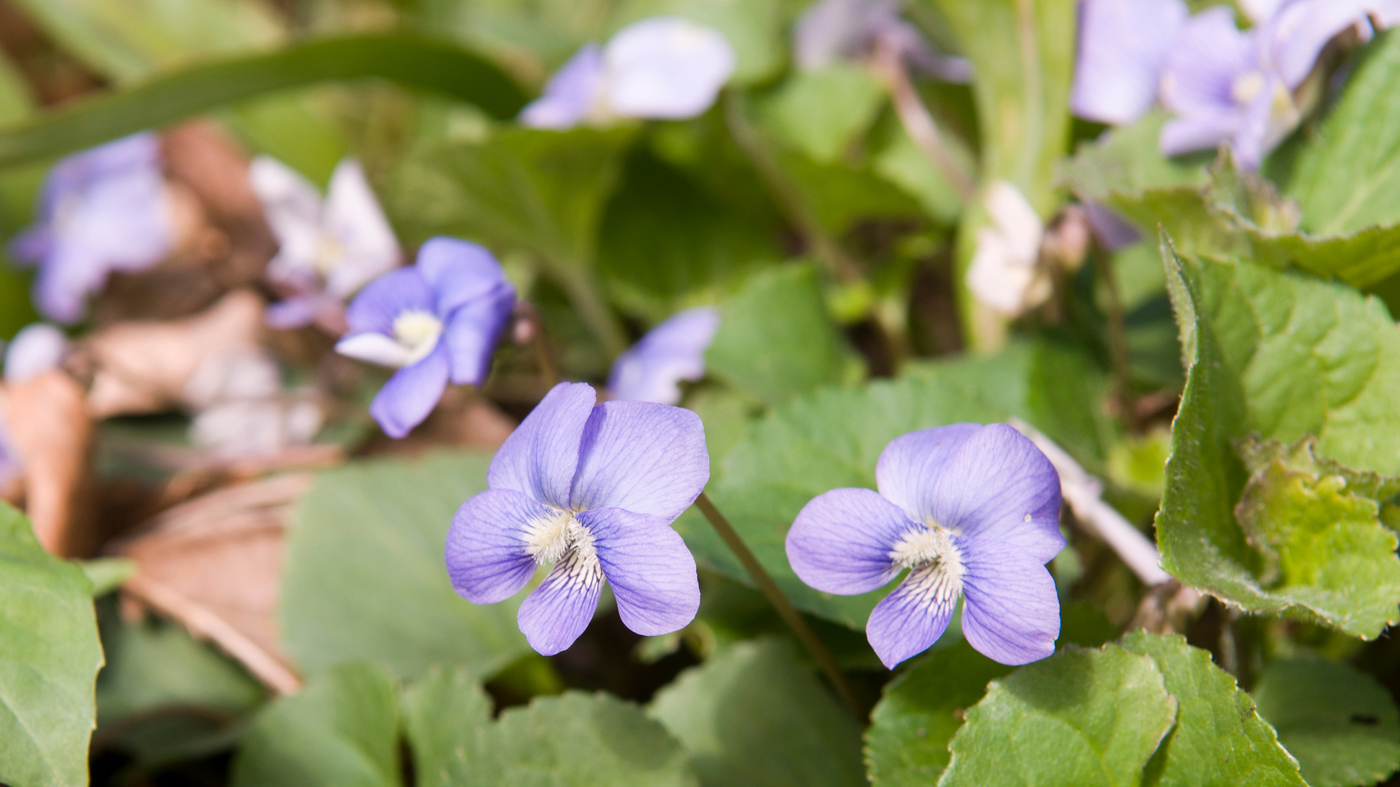
…For Such Brief Moments
Single stalks of multiple white bells plus scalloped foliage reminiscent of columbine mean false rue anemone. Wild geranium is easy to spot, but the familiar pink flowers will arrive only after the clumps of foliage have established themselves. Shooting stars are true to their names. Look for spring beauty and spring cress, merrybells, and blue violets. These woodland wildflowers are known as ephemeral plants, because they appear briefly in spring, die to the ground in summer, but return the following year. Their root systems are kept alive and nourished below the soil.
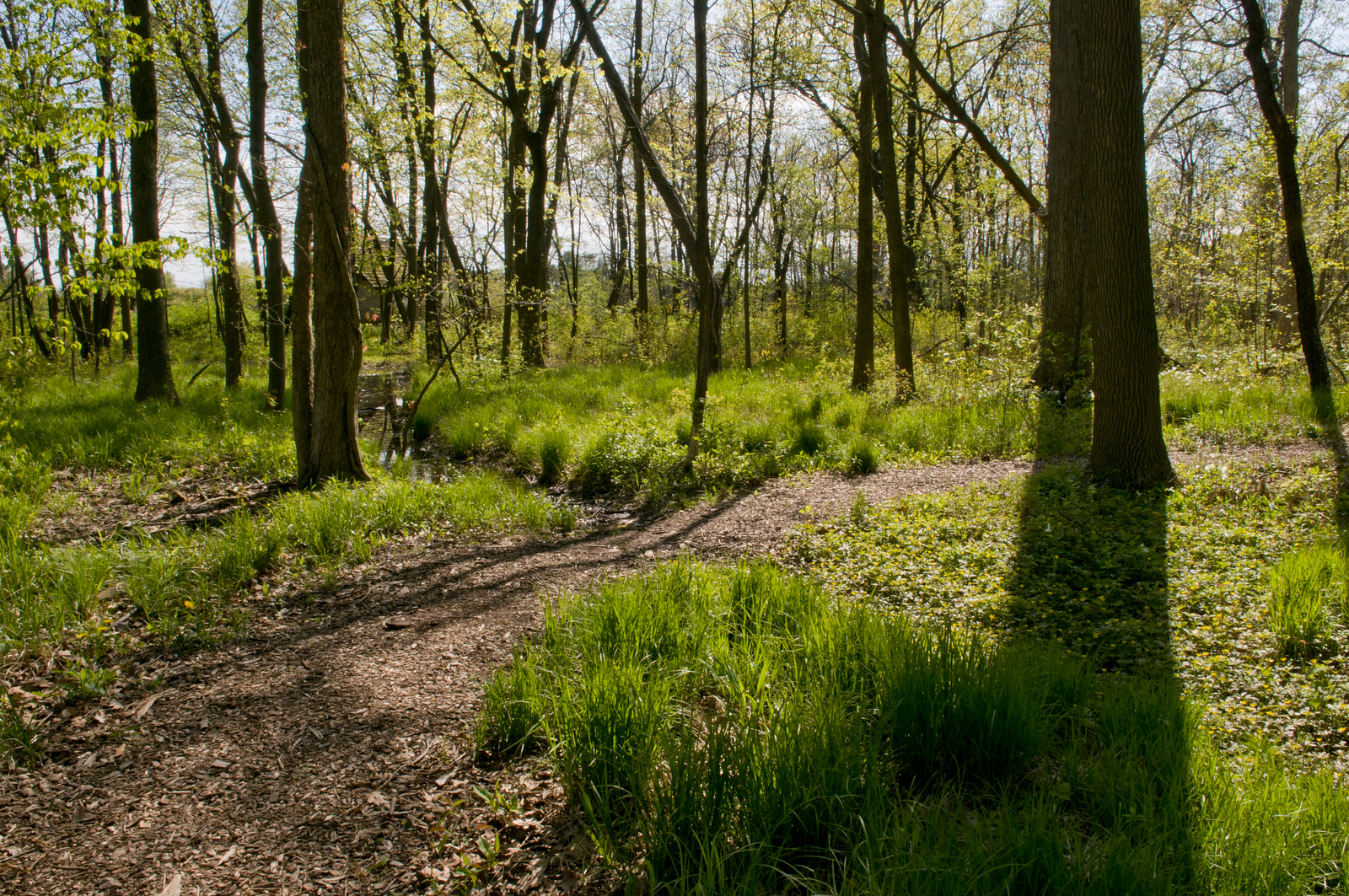
Invasive Plants Destroy Diversity
In the McDonald Woods, what you don’t see is as important as what you do see. The open spaces; the absence of garlic mustard, which used to carpet the forest floor; and the presence of more sunlight, now able to penetrate further into the Woods, are all due to the year-round restoration work of Garden staff and volunteers. Invasive species are constantly removed so that the native plants might thrive. Buckthorn, Indian strawberry, and other invasives have been cut down and dug out in a massive effort to restore this diverse community. Native seeds are scattered and small native seedlings are planted to aid in the conservation of the Woods.
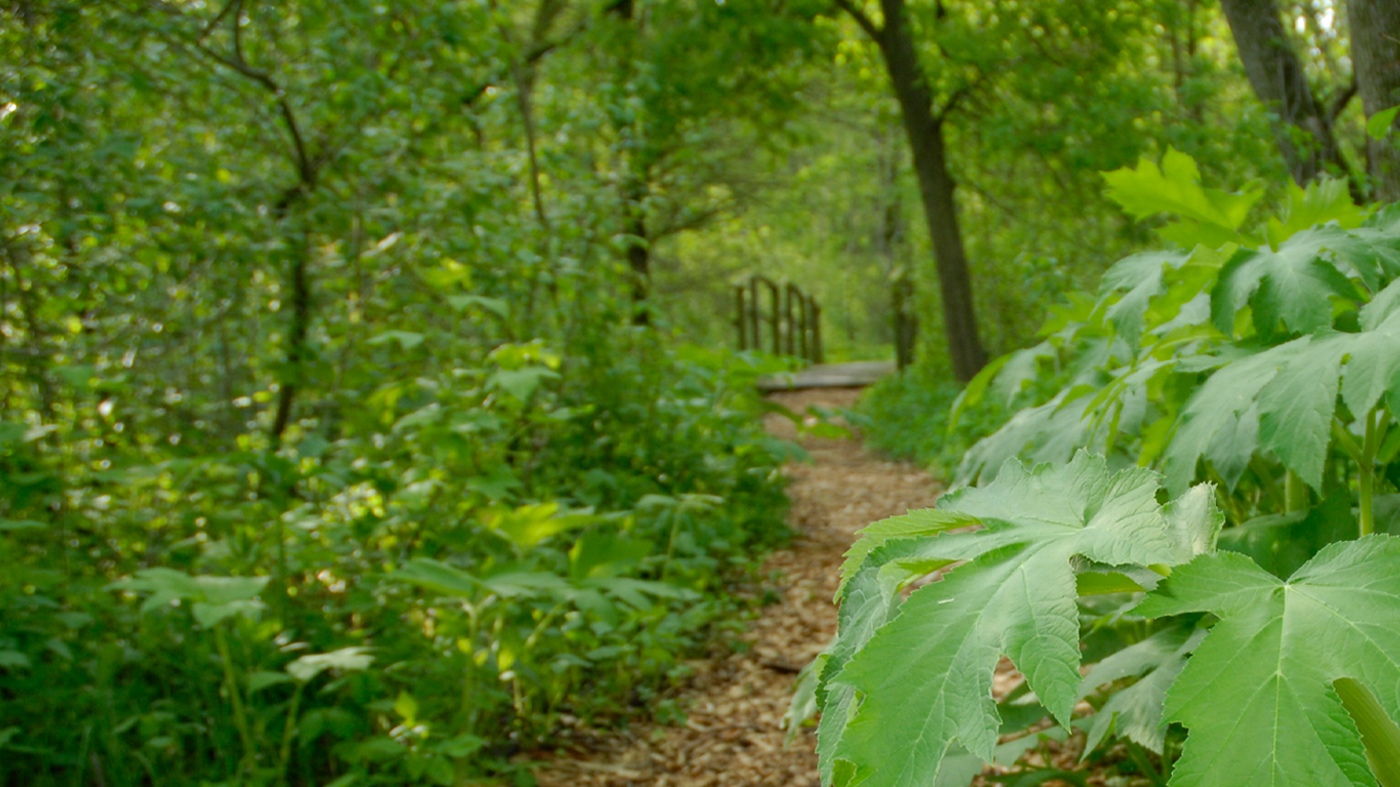
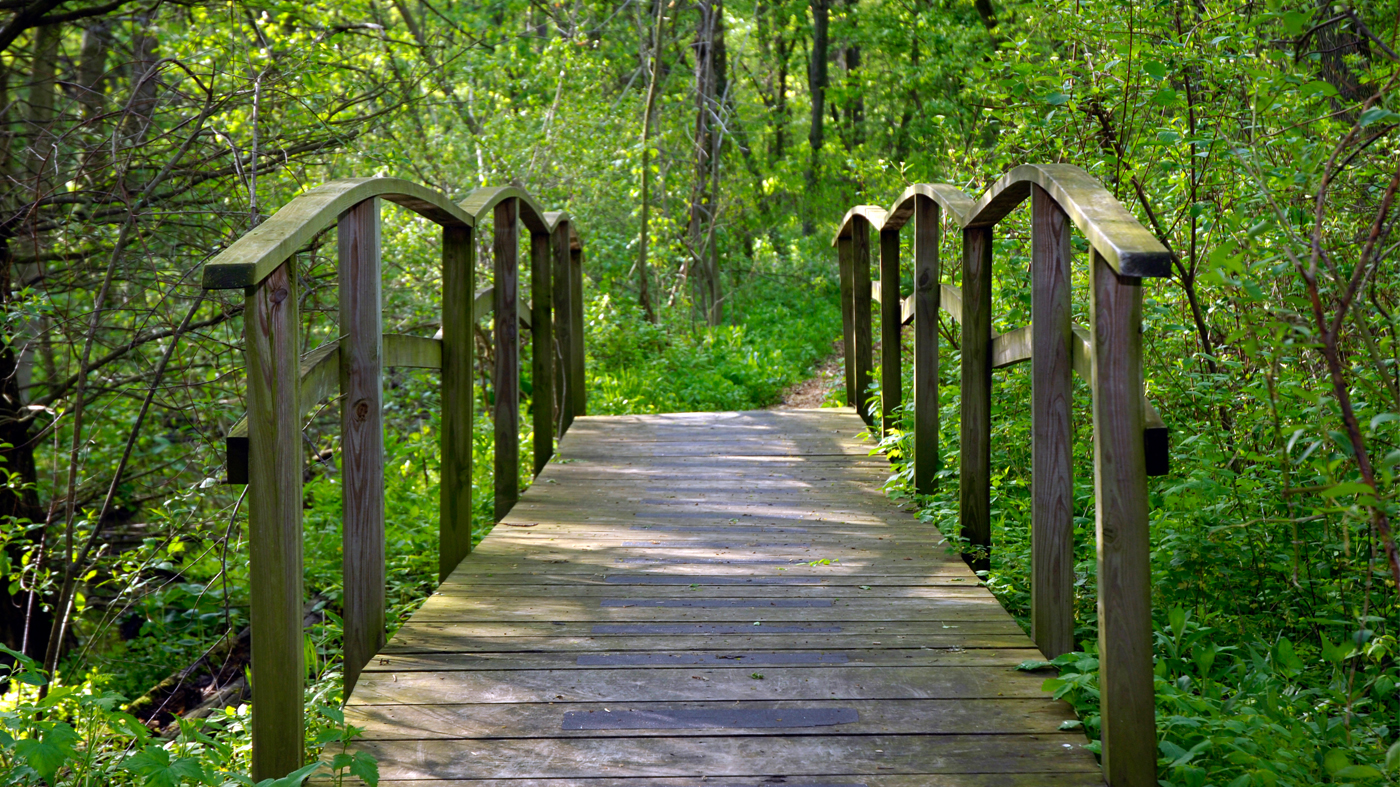
Two Trails and a Council Ring
Visitors will notice the deer fencing that helps keep the overpopulation of deer from browsing wildflowers and woody plants alike. The Fern Loop Trail and the Spring Wildflower Area feature separate short trails, while the Garden is also restoring a trail deeper into the Woods. A Council Ring makes a perfect spot to sit and look up as you listen for birds, or look down as you read up on wildflower identification.
A Community of Life
A series of wooden bridges and boardwalks keeps visitors dry in the wet season and permits closer viewing of moisture-loving sedges, rushes, and reeds, as well as turtles, toads, and water birds. On a quiet spring morning, it’s hard to imagine the Woods as a great ecosystem, with each individual species interdependent on others. This is a true community of life, with each life form connected to the others. Some of these relationships are obvious, like the predatory Cooper’s hawk and the smaller birds; or the great-horned owl and its prey of birds, rabbits, and chipmunks; wildflowers and their pollinators; or sun-loving oaks and shade-loving understory shrubs. Some important relationships are invisible, known only to the Garden’s research scientists who monitor their presence, such as the interconnectedness of mycorrhizal fungi with root hairs, soil, and nutrients. Who knew? You do now.

